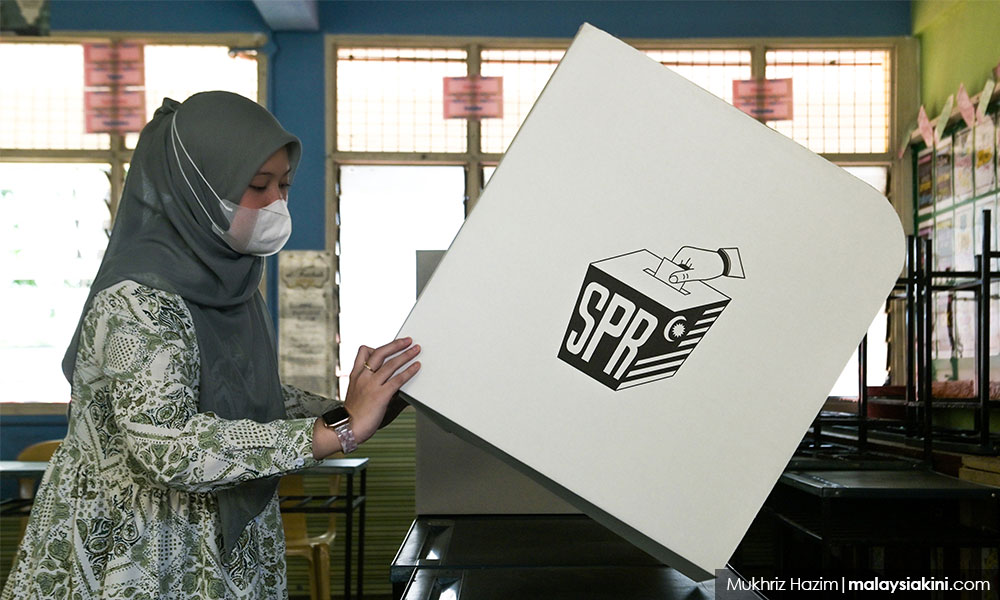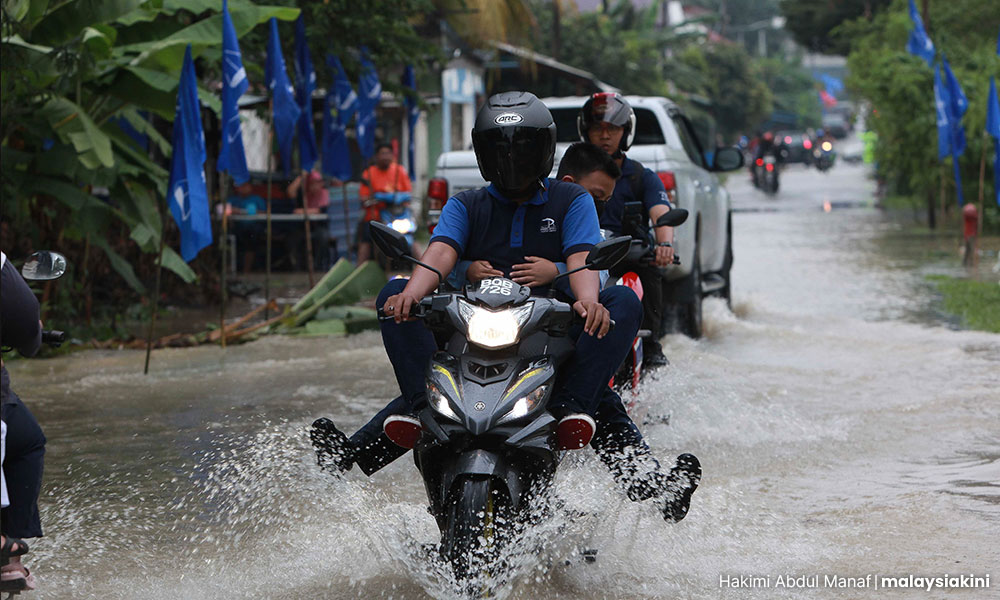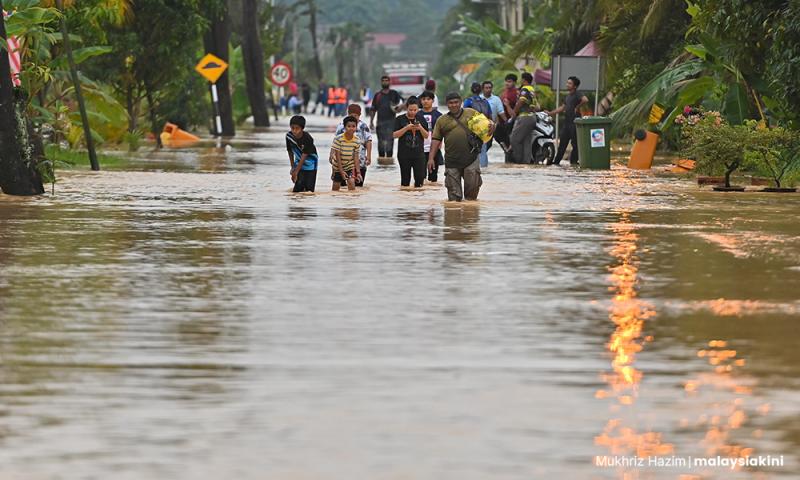COMMENT | Measures to mitigate flood hazard during GE15
COMMENT | The Malaysian Meteorological Department (MetMalaysia) recently announced that the public should prepare for a forecasted average rainfall of around 100mm to 900mm in November this year during the north-east monsoon period, and La Nina episodes for most states in Peninsular Malaysia.
Thus Malaysians must clearly brace themselves for a more severe and destructive flood and make careful preparation before and during this flood to keep safe and survive this calamity.
Apart from the tragic loss of lives, the property damage arising from floods is indeed a serious threat to the nation’s green development agenda.
The floods of 2021 in several states resulted in the evacuation of almost 20,000 families, with an estimated loss of at least RM20 billion.
Malaysia received accolades nationally as well as internationally when our medical professionals and experts were managing Covid-19 so well, maintaining cases in three digits and deaths at two digits level.
Then came the Sabah state by-elections in September 2020 even as the Health Ministry (MOH) had strongly advised against holding the elections. Such advice was ignored and election machinery was set in motion to organise the polls.
This was when Malaysia’s daily virus cases started to skyrocket given voters and politicians went back and forth between Peninsular Malaysia and Sabah for the polls.
Ironically, this event triggered the escalation of Covid-19 cases that reached five digits and deaths by three digits.

Statistics of storm/flood destruction
The World Meteorological Organisation (WMO) Atlas of Mortality and Economic Losses from Weather, Climate and Water Extremes for a 50-year period (1970-2019) spotlighted that weather, climate and water hazards accounted for 50 percent of all disasters, 45 percent of all reported deaths and 74 percent of all reported economic losses.
The WMO further outlined that of the top 10 disasters, the hazards that led to the largest human losses during the period have been droughts (650 000 deaths), storms (577,232 deaths), floods (58,700 deaths) and extreme temperature (55,736 deaths).
The US National Oceanic Atmospheric Administration (NOAA) has reported that more deaths occur each year due to flooding than from other thunderstorm-related hazards and highlighted that the US Centre for Disease Control (CDC) reported that over half of all flood-related drownings occur when a vehicle is driven in hazardous flood water and that the next highest percentage of flood-related deaths is due to walking into or near flood waters.
The main reason is that people tend to underestimate the force and power of water.
As MetMalaysia has sent out alerts of thunderstorms and floods including flash floods striking Malaysia, this signals a grave danger for Malaysians who are required to travel in their own private cars, in public transportation or even to walk to voting centres to cast their votes should flash floods strike during the 15th general election.
Sadly, politicians have again overlooked this grave reality in favour of their political ambitions.
As the Sabah’s state election had escalated Covid-19 infections and deaths, will the staging of the GE15 amid the dreadful monsoon season escalate Malaysia’s death toll from year-end floods and thunderstorms?

Some recommendations for Malaysia
Upon the dissolution of the Parliament, a caretaker government (made up of the incumbent government) is expected to take over to govern the country with limited authority, including no new legislation to be passed and no new policies to be signed by any ministers.
However, the chief secretary to the government will continue to steer the civil service. In view of the impending thunderstorm and floods expected soon and that past records showed Malaysia was ill-prepared for the December 2021 flood, we appeal to the interim government to develop new effective policies and programmes to enhance the nation’s capabilities in disaster management.
With the campaign period being the period between the nomination date and the polling date, this means those activities will be organised within the period coinciding with the more destructive second-wave floods.
Thus we appeal to the interim government to allocate and designate sufficient, capable and experienced manpower and experts to organise and support disaster management efforts to ensure the impending disaster will be well-managed.
Political parties and their team should obtain the latest information from relevant authorities regarding flood risk areas to avoid organising campaigns and polling in these risky and dangerous areas.
Adhere always to avoiding flood hotspots as per the advice of the deputy director-general of the National Disaster Management Agency (Nadma) at the National Climate Forum recently.
In 2019 and 2020, the New South Wales SES launched their Floods. The Risk is Real campaign to increase flood awareness in the region. The campaign personalises the message by using billboards with local landmarks showing floods can occur in that specific area.
This campaign also incorporates interactive flood mapping and augmented reality to show people what can happen when floods strike. Thus in addition to the political parties’ strong focus on putting up posters and billboards to showcase their candidates, efforts must also be undertaken to put up billboards with local landmarks showing flood can occur in that particular area and location.
Many international organisations responsible for disaster management such as that in Australia, the UK and the US have sent out alerts regarding what to do before, during and after floods to guide their citizens on the appropriate and timely action and responses to enhance their safety and survival.
The caretaker government should accord similar priority with the support of Nadma, local and state agencies plus the Communications and Multimedia Ministry to disseminate what should and should not be done during these periods via as many communication channels and languages as possible.
It has been globally recognised that the highest number of deaths from floods are attributed to driving in flood waters followed by deaths from walking in and near flooded areas. A case in point, the CDC has warned that floodwater can pose a drowning risk for everyone, regardless of their ability to swim. Swiftly moving shallow water can be deadly, and even shallow standing water can be dangerous for small children.

CDC advises to always follow warnings about flooded roads and don’t drive in flooded areas because cars or other vehicles won’t protect you from floodwaters as they can be swept away or may stall in moving water.
Autocar India advises drivers to check Google Maps, talk to people on the road, follow traffic updates on social media or radio, be alert while driving, stay away from flooded roads and find alternate routes
Road Safety Authority (RSA) advises if the road ahead is flooded choose another route, and do not attempt to drive through it. Flooded roads that appear shallow could be deeper than you think
New York Times had reported that Gordon Giesbrecht, a professor at the University of Manitoba who has studied drownings and human responses to extreme environments estimated that about 350 to 400 people a year drown in their cars in the US and Canada after their vehicle falls into a body of water or becomes stranded in flooding.
He urged people to get out of their vehicles as soon as possible, saying there may be very little time before the water becomes inescapable. A vehicle that is carried away could also roll over, making escape virtually impossible. “Bottom line is if the car stalls out in the water, get out and on the roof.
American Safety Council advocated that if you find yourself in your car during a flood or flash flood, avoid large puddles of ground on the water, and, if necessary, leave your car and seek higher ground on foot.
If you’ve exited your vehicle, don’t stand in the moving water, if possible, as just six inches of moving water can knock a person over.
The council also advised drivers to be wary of fallen power lines, which will make the flood water deadly.
Thus the government must prepare and provide posters, TV and radio adverts, alerts, news articles and SMS to highlight these dangers such as that advocated by the CDC, Smart Driving UK and Autocar India to include the information.
SHERIFFAH NOOR KHAMSEAH AL-IDID SYED AHMAD IDID is an Innovation and Nuclear Advocate at Alumna Imperial College, University of London, United Kingdom.
The views expressed here are those of the author/contributor and do not necessarily represent the views of Malaysiakini.
RM12.50 / month
- Unlimited access to award-winning journalism
- Comment and share your opinions on all our articles
- Gift interesting stories to your friends
- Tax deductable
